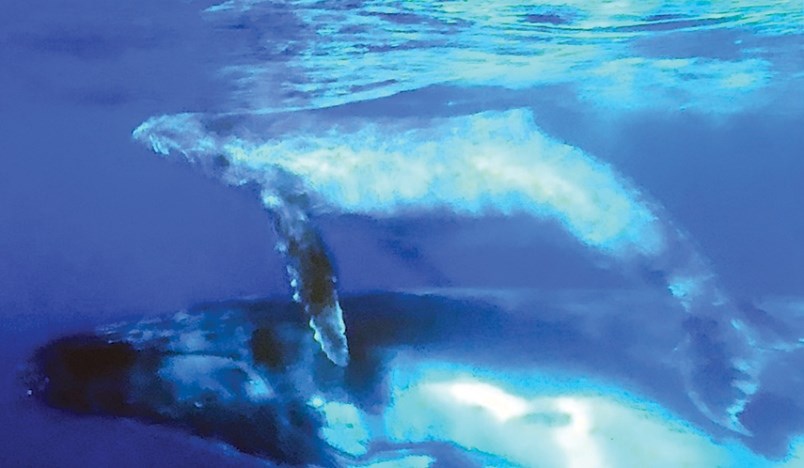Tonga is a five-and-a-half-hour flight from Sydney or a three-hour flight north of Auckland. Either way, from the moment you land at “small is beautiful” Fua’amotu International Airport, it’s a fascinating, friendly world.
Tonga is the last remaining monarchy in the South Pacific.
Unparalleled Journeys, of Christchurch, New Zealand, which specializes in bespoke luxury travel in the South Pacific, had organized a trip for Stanford University Travel Study (although you don’t have to be an alum to travel with them).
Our Stanford group was honoured by having Her Royal Highness Princess Salote Mafile’o Piloluvu Tuita and her husband attend our welcoming dinner. She’s the sister of King Tupou VI.
Next morning we took the short flight to Neiafu on Vava’u, one of the northern Tongan islands, where we stayed at the Tongan Beach Resort – pairs of rooms right on the beach, hammock suspended between two palm trees, open-air dining.
I learned to refill the basin on the porch with saltwater from the ocean to wash off sand. “If you use fresh water, the pigs will drink out of it,” a resort maintenance man told me.
But I hadn’t come to see pigs. I came to swim with humpback whales – in all their 30,000-kilogram, 16-metre splendid beauty. And for the next three days that’s exactly what we did.
Each morning we’d divide up into two boats moored at the resort’s dock. We had been fitted with snorkelling gear; some of us had partial or full body wet or sun/stinger protection suits.
Our local skipper and guide took us out to areas where the whales had been seen or where they were known to congregate. Once we spotted one or more whales, half our group waited for the first prompt: “Get your gear on, and sit on the edge of the boat.”
When the boat was in position as close as possible to the whales, we got the excited call from the skipper: “Into the water, into the water!”
Escorted by the guide we would head over toward the whales. Typically we’d spot a mother (the size of a school bus) below us, often with a calf, which would playfully swim around us, sometimes breaking the surface of the water, sometimes just staying near its mother.
Born three to four metres long and weighing 1,000 kg, the “babies” double in size in their first year – thanks to drinking 600 litres a day of their mother’s milk.
What an amazing experience, being so close to these gentle giants. I’d drifted away from the others in my group, so I had this particular mother and baby all to myself. I just floated face-down in the water, motionless, as the baby swam around the mother whose bulk almost filled my field of vision, she was that close beneath me.
Back to the boat we went after about 10 or 15 minutes so the other group could have a turn swimming with the whales.
We often saw the whales breaching. At one point two whales swam along near our boat, slapping the water with their five-metre flippers at exactly the same time in a demonstration of perfect synchronized swimming.
I didn’t get to hear the male whales singing live but one of our group recorded their song from his boat – a variety of sounds that scientists guess might be meant to attract mates.
If you go:




